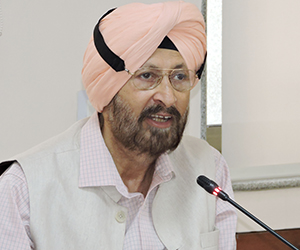Fifty years ago, India suffered the ignominy of a military debacle at the hands of the People’s Liberation Army of communist China. Perceptive strategic analysts now attribute the Himalayan blunder to the untenable ‘Forward Policy’ and Pandit Nehru’s diktat to a fund-starved, ill-equipped, ill-clad and unprepared army to ‘throw out the Chinese’. Painful memories of that defeat still linger in the national psyche. However, what is not so well known is that there were many instances of raw courage and indomitable spirit even during the embarrassing course of the 1962 campaign – for example Brig (later Lt Gen) N C Rawley’s brigade held out for 22 days against the Chinese despite overwhelming odds at Walong along the Lohit River in eastern Arunachal Pradesh. In the West, one such battle was fought at Rezangla, a pass at 16,000 feet on the South-Eastern approach to the Chushul Valley in Ladakh.
In a battle without parallel in the annals of modern military history, 123 bravehearts of Charlie company, 13 Kumaon fought to the ‘last man, last round’ on November 18, 1962. Employing their famous ‘human wave’ tactics, the Chinese launched determined, multi-directional attacks against the isolated forward post. Surrounded and heavily outnumbered, the men fought back with rare determination and beat back wave after wave of attack. The gallant company commander, Major Shaitan Singh, crawled from trench to trench, personally motivating his men under withering fire even though he was himself wounded. The company suffered 114 casualties and finally ran out of ammunition, but these gallant warriors neither retreated nor surrendered.
It was only when the Chinese permitted the Indian army to collect the bodies in February 1963 that the nation learnt the truth about the heroic fight put up by these valiant warriors. The body of Major Shaitan Singh, honoured posthumously with the Param Vir Chakra, lay in the open field where he had fallen while personally leading a charge to relieve a besieged platoon post. The bodies of 23 men lay around him, riddled with bullet and splinter wounds. Maj Gen Ian Cardozo (Retd) has written in his book Param Vir: Our heroes in Battle, “The 2-inch mortar man died with a bomb still in his hand. The medical orderly had a syringe and bandage in his hands when the Chinese bullet hit him... Of the thousand mortar bombs with the defenders all but seven had been fired and the rest were ready to be fired when the (mortar) section was overrun."
All over the Rezangla defences, brave young men lay dead in their bunkers and trenches. There were multiple shell, shrapnel, bullet and bayonet wounds on their bodies. They were still clutching their cold weapons in their stiff hands. Ammunition ‘empties’ were strewn all around them. Some had even charged the attacking Chinese in a last inspired burst of raw courage. In Lest We Forget Capt Amarindra Singh has written: “In an unusual mark of respect for which the Chinese are not usually noted, their bodies had been covered with blankets, pegged down with bayonets. There could have been no greater tribute to their courage than this acknowledgement by their enemy.”
In all, 96 bodies were recovered from the Rezangla battlefield. Subsequently, in 1965, almost three years later, a shepherd recovered two bodies, at a light machine gun (LMG) position on a flank. Ten men of Charlie Company remained unaccounted for. The Chinese took six severely wounded men POW. Of these, two escaped miraculously and rejoined the battalion. In its desperate fight back, Major Shaitan Singh’s outstanding outfit had killed over 500 Chinese.
Indeed, on that cold November day, Charlie Company, 13 Kumaon, added a new chapter of unflinching devotion to duty and supreme courage under the most adverse circumstances to the Indian army’s glorious traditions of valour and sacrifice in the service of the nation. No nation could have expected more from the young keepers of its frontiers; no trained body of spirited young soldiers could have possibly fought to the muzzle as these men did.
Inscribed on the war memorial at Chushul is the following:
For the Ashes of His Fathers and the Temples of His Gods.
The supreme sacrifice made by the bravehearts of Charlie Company, 13 Kumaon, deserves greater recognition than it has received. Sadly, India has not yet learnt how to honour its armed forces martyrs in a befitting manner worthy of their sacrifices. The country has so far failed to build a war memorial in its capital despite the untiring efforts of the Services HQ.
Published Date: 22th October 2012










Post new comment